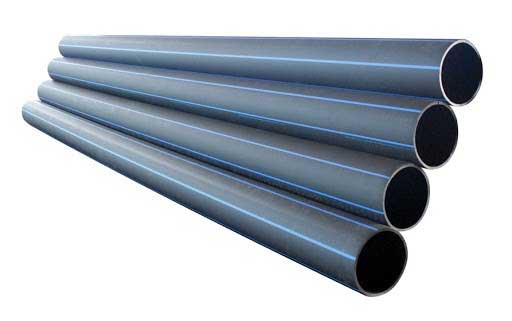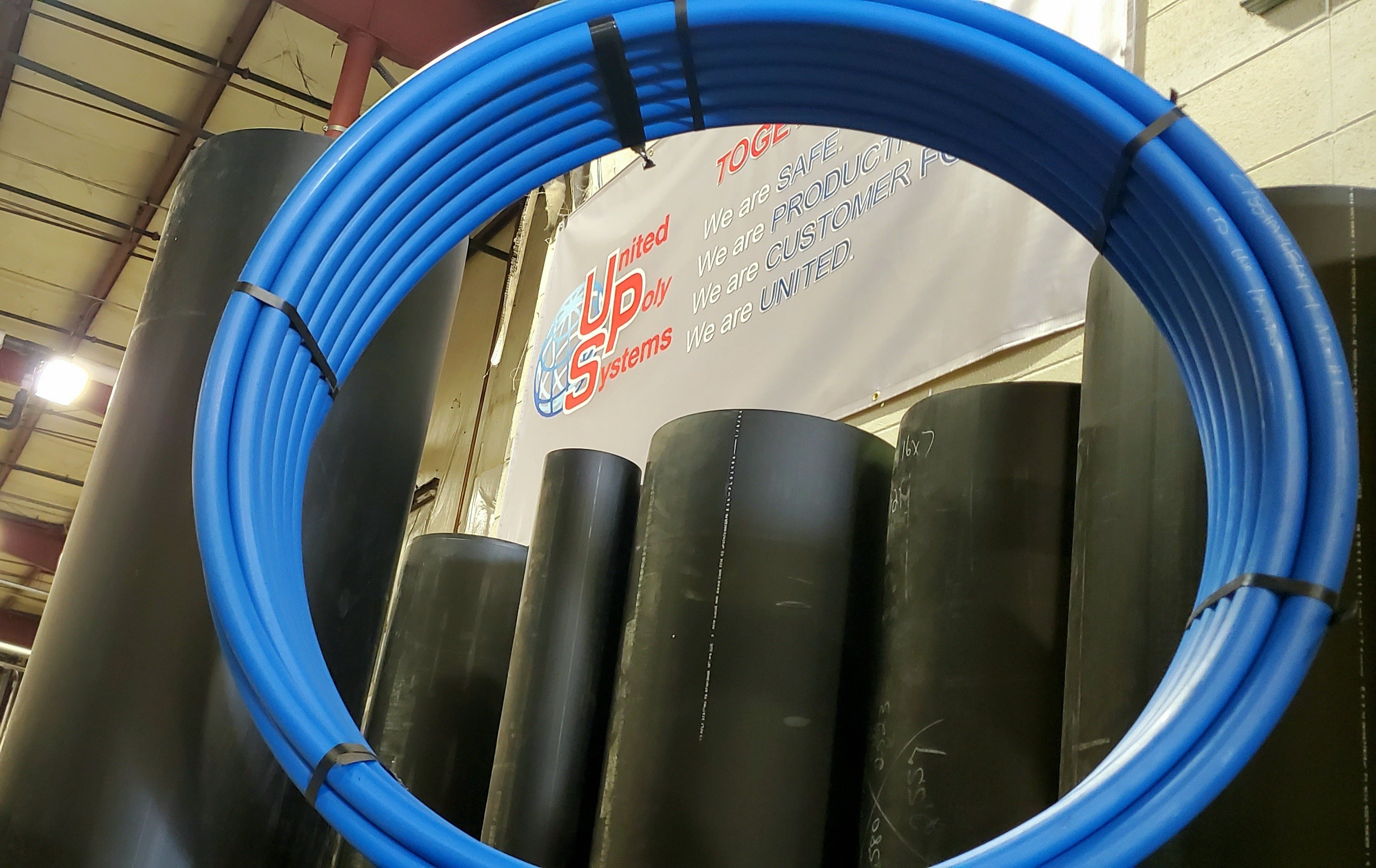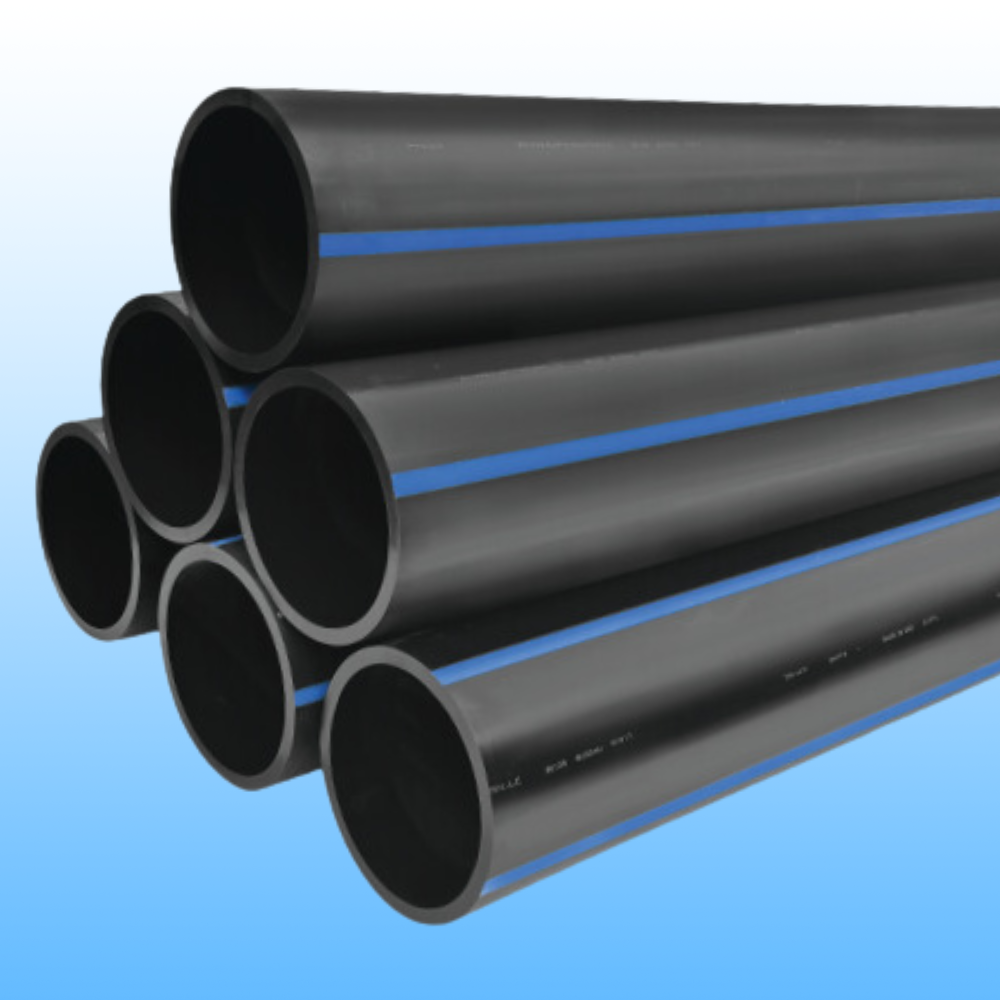How Midland TX HDPE Pipe Fittings in Stock Save Time
Wiki Article
Check Out the Production Process Behind High-Quality HDPE Pipeline and Its Applications
The production process of premium HDPE pipelines is complex and methodical. It starts with the selection of resources that boost efficiency. Following this, ethylene undergoes polymerization to create resin, which is after that formed with extrusion. Quality control is critical, making certain that the end product fulfills strict criteria. The journey of HDPE pipelines does not finish with production. Their applications throughout different sectors expose a broader importance worth analyzing.Comprehending HDPE: Properties and Advantages

High-density polyethylene (HDPE) is a functional thermoplastic understood for its toughness and resistance to different environmental aspects. This product displays outstanding tensile strength, making it ideal for requiring applications. Its low-density framework adds to a lightweight item, helping with ease of handling and installation. HDPE also showcases exceptional resistance to chemicals, which minimizes degradation when subjected to extreme compounds.
The material's reduced dampness absorption better boosts its longevity, making it suitable for usage in pipelines and tank. In addition, HDPE is immune to ultraviolet (UV) radiation, guaranteeing that items preserve their stability even when revealed to sunlight. Its flexibility allows for the development of elaborate shapes without compromising toughness. The environment-friendly nature of HDPE, typically stemmed from recycled products, adds to its appeal, advertising sustainable techniques in manufacturing. In general, these buildings and advantages make HDPE a favored choice for various industrial and customer applications.
Resources Option for HDPE Manufacturing
The choice of basic materials for HDPE manufacturing is important to confirm the last product satisfies the preferred requirements and high quality criteria. High-density polyethylene (HDPE) is mostly created from polymerized ethylene, acquired from fossil gas such as gas or unrefined oil. The high quality of these feedstocks greatly affects the mechanical and thermal homes of the final HDPE.Additives also play a substantial role in boosting HDPE's efficiency, consisting of antioxidants, UV stabilizers, and colorants, which boost resilience and resistance to environmental elements. The selection process must consider not only the chemical make-up of the raw products however additionally their processing qualities to guarantee reliable production.
The sourcing of raw products ought to focus on sustainability and conformity with environmental policies, as responsible techniques are critical in today's market. Eventually, cautious basic material option lays the foundation for producing high-grade HDPE pipelines ideal for diverse applications.
The Extrusion Process: Forming HDPE Pipeline
The extrusion process plays an essential role fit HDPE pipes, beginning with meticulous material preparation techniques that ensure perfect circulation and uniformity. Similarly crucial is the style of the die, which straight influences the last dimensions and surface high quality of the pipeline. With each other, these variables add greatly to the effectiveness and high quality of HDPE pipeline production.Product Preparation Strategies
Reliable manufacturing of HDPE pipes starts with careful material prep work methods, specifically the extrusion procedure. During this stage, high-density polyethylene material is first dried to eliminate dampness, ensuring excellent circulation attributes. The resin is after that fed into the extruder, where it undergoes heating and melting, changing into a thick state. This heating process is carefully managed to preserve the product's stability and performance. The molten HDPE is compelled with a die, forming it into a constant pipeline form. Proper temperature monitoring during extrusion is necessary, as it straight affects the product's homes and the final product high quality. When shaped, the HDPE pipeline is cooled down and reduced to specified lengths, all set for subsequent handling and applications.Die Layout Significance
Accuracy in die style plays a necessary role in the extrusion procedure of HDPE pipelines. The die serves as the final shaping tool, directly affecting the pipe's measurements, wall surface thickness, and surface finish. A well-designed die warranties consistent product flow, minimizing problems such as abnormalities and weak places. The geometry of the die should be maximized to fit the certain residential or commercial properties of HDPE, including its viscosity and thermal actions during extrusion. In addition, the cooling price of the product as it goes through the die can noticeably influence the pipe's structural honesty. Subsequently, buying advanced die innovation is vital for producers intending to produce premium HDPE pipes that satisfy sector my company criteria and customer assumptions.Quality Assurance Procedures in HDPE Production
Numerous factors influence the quality of HDPE pipe manufacturing, reliable quality control actions are crucial to guarantee uniformity and reliability in the final product (Pipe Manufacturing Midland TX). Trick quality assurance techniques consist of extensive product evaluation, validating that the raw polyethylene fulfills recognized standards for pureness and thickness. Throughout the extrusion procedure, specifications such as temperature, pressure, and cooling time are carefully checked to keep dimensional precision and architectural stabilityOn top of that, post-production testing is important; makers typically perform hydrostatic examinations to evaluate the pipeline's toughness and resistance to stress. Aesthetic assessments for surface area defects read more better improve quality control. Certification from pertinent standards organizations, like ASTM or ISO, supplies an extra layer of integrity. By executing these complete quality assurance actions, suppliers can reduce flaws, enhance efficiency, and make certain that the HDPE pipes fulfill the specific requirements of different applications, inevitably leading to consumer contentment and trust in the product.
Applications of HDPE Pipe Across Industries
HDPE pipelines are made use of across various industries due to their sturdiness and convenience. In water distribution systems, they guarantee effective distribution, while in wastewater management, they give dependable remedies for waste transportation. In addition, agricultural watering networks profit from HDPE's resistance to corrosion and adaptability, making it an optimal choice for contemporary farming techniques.
Water Circulation Systems
A significant variety of markets depend on high-density polyethylene (HDPE) pipelines for reliable water distribution systems. Understood for their resilience and resistance to deterioration, HDPE pipes are extensively utilized in local water supply networks, farming watering, and industrial applications. Their light-weight nature facilitates easy handling and setup, reducing labor costs and time. Additionally, HDPE pipelines can tap hose connector fit numerous pressure degrees, making them suitable for both low and high-pressure systems. hdpe pipe in stock Midland TX. The flexibility of the material enables for smooth assimilation right into existing infrastructure, lessening the demand for extensive excavation. Moreover, HDPE's resistance to chemical seeping guarantees that the water delivered stays risk-free and tidy, making it an excellent choice for preserving the high quality of drinkable water across numerous fieldsWastewater Management Solutions
Effective water distribution systems additionally lead the way for innovative wastewater monitoring services, where high-density polyethylene (HDPE) pipelines play a substantial role. Renowned for their durability and resistance to rust, HDPE pipelines are suitable for moving wastewater in numerous settings. Their adaptability permits for very easy installation in complicated settings, lessening the demand for considerable excavation. Furthermore, HDPE's smooth indoor surface area reduces rubbing, improving circulation prices and effectiveness. These pipelines are additionally resistant to chemical leaching, making certain that contaminants do not jeopardize the surrounding setting. Industries, districts, and treatment facilities significantly rely on HDPE pipes for their reliability and long life, making them a favored selection for modern wastewater administration systems. This flexibility underscores the critical value of HDPE pipelines throughout many applications.Agricultural Irrigation Networks
Agricultural watering networks benefit greatly from making use of high-density polyethylene (HDPE) pipes, which offer reliable and reputable water shipment to crops. HDPE pipes are lightweight, making them simple to deliver and set up, while their versatility permits various configurations in varied surfaces. These pipes demonstrate superb resistance to rust, chemicals, and UV radiation, making sure resilience in rough farming environments. Furthermore, their smooth interior surface lessens friction loss, optimizing water flow and minimizing energy prices connected with pumping. The long life of HDPE pipes, frequently going beyond 50 years, adds to decrease maintenance and replacement expenditures. Farmers increasingly depend on HDPE pipes to improve watering effectiveness and promote lasting farming techniques, eventually leading to boosted plant yields and source conservation.
Future Trends in HDPE Pipe Modern Technology
As the need for sustainable and effective facilities grows, developments in HDPE pipe innovation are positioned to change different industries. Arising patterns include the assimilation of clever modern technologies, such as sensing units and IoT capabilities, which facilitate real-time monitoring of pipeline problems, minimizing upkeep expenses and protecting against leaks. In addition, the development of advanced manufacturing techniques, such as 3D printing, is allowing the manufacturing of facility, personalized pipe layouts that satisfy certain project demands.Additionally, the focus on recycling and circular economic climate techniques is driving the advancement of HDPE pipelines made from recycled products, improving sustainability. Improved jointing approaches, such as electro-fusion and mechanical fittings, are additionally enhancing installation effectiveness and reliability. Ultimately, the growing focus on ecological guidelines is pushing suppliers to embrace greener manufacturing processes, making sure that HDPE pipelines not just satisfy industry standards yet also foster an even more lasting future for infrastructure growth.
Frequently Asked Questions
Just How Does HDPE Compare to Other Plastic Materials?
HDPE outshines several various other plastic products relating to resilience, chemical resistance, and versatility. Its reduced thickness and high tensile stamina make it suitable for various applications, typically surpassing alternatives in both performance and longevity.What Are the Ecological Influences of HDPE Manufacturing?
The ecological influences of HDPE production consist of greenhouse gas exhausts, power usage, and prospective contamination from producing processes. Additionally, inappropriate disposal can bring about dirt and water contamination, increasing concerns concerning lasting eco-friendly impacts.Can HDPE Piping Be Recycled?
Yes, HDPE pipelines can be reused. Numerous centers approve used HDPE for handling, transforming it into brand-new products. This recycling adds to sustainability initiatives, reducing plastic waste while saving sources and power in the production cycle.What Is the Life-span of HDPE Pipes?

How Do Temperature Variations Affect HDPE Pipe Performance?
Temperature level variants substantially influence HDPE pipeline efficiency, affecting flexibility and strength. High temperatures can lead to softening, while reduced temperature levels might trigger brittleness, eventually influencing the pipe's sturdiness and suitability for various applications in varied settings.Report this wiki page